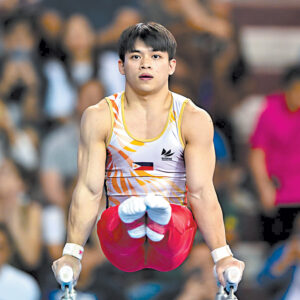Patriotism, as a concept, has always been defined as the strong emotional attachment to one’s local community or nation-state. Stories of heroic, patriotic, and to some extent, violent feats by Andres Bonifacio and Jose Rizal during the Spanish occupation have been told for generations as leading examples of Filipino nationalism. However, along with the rise of new ideologies heralds a brand new meaning for the concept that the two heroes died for.
Globalization and the internet have impacted multiple facets of human lives and have reshaped society as a result. The constant exchange of ideas and goods driven by the former has been, in a way, boosted by the latter’s ability to connect people all over the world. This powerful combination allows for unprecedented cultural exchange and has blurred territorial boundaries in a more interconnected global community.
Yet, in the midst of this digital migration emerges a growing awareness of the importance of preserving local identity and taking pride in one’s own culture. In a sense, expressions of patriotism have also taken new forms. While Filipinos still deeply value traditional symbols such as waving the flag, singing the national anthem, or participating in state ceremonies, modern expressions of Filipino patriotism are intertwined with cultural pride on the internet and in daily life.
Perhaps, the most meaningful expression of modern patriotism can be found in the lives of overseas Filipino workers (OFWs), who are often hailed as the country’s modern-day heroes. Despite being away from Philippine soil, OFWs remain strongly rooted in their identity, proudly celebrating Filipino festivals abroad, cooking native dishes, teaching their children the language, and sending remittances that have long been the saving grace of the Philippine economy.
Every Filipino caregiver in Europe, seafarer in the Middle East, or nurse in North America is a quiet act of patriotism, showing love for where they came from regardless of where they are.
Freepik
Another form of modern patriotism can be seen in malls across the archipelago. It is apparent that there is a renewed appreciation for indigenous textiles, regional crafts, and traditional artistry. Supportive local campaigns, like the Philstar Media Group’s “Nakakalocal,” have sprung up and resulted in the current renaissance in Filipino arts, crafts, and local industries that can be seen in shopping centers today.
Central to this is the increasing desire of Filipinos to help other Filipinos. As in the context of the Bayanihan culture, support for local artisans and entrepreneurs is seen as both an economic and patriotic gesture, helping preserve Filipino traditions while promoting national identity in a modern context.
This renewed sense of cultural pride has even escaped the nation’s borders and now thrives on global stages and the internet. #PinoyPride has become a common tag throughout social media, where Filipinos rally behind fellow countrymen achieving excellence abroad regardless of political affiliation, gender identity, or ethnic or religious background.
Food bloggers highlight hidden culinary gems in the metro and in the provinces, fashion influencers proudly wear garments by Filipino designers, and young creators make short videos teaching Filipino history, regional dialects, or traditional crafts. Filipino social media is often peppered with wholesome content that support fellow Filipinos and reinforces national pride.
On the global stage, this phenomenon has become most apparent in sports. Crime rates have famously dropped when boxing legend Manny Pacquiao fought in the 2000s. Olympic gold medalists Carlos Yulo and Hidilyn Diaz were cheered on by Filipinos and were even given various incentives for their wins. Even basketball players who play in leagues abroad, such as Jordan Clarkson in the National Basketball Association and Kai Sotto in the Japanese Basketball League, are venerated for representing the country internationally.
Similarly, Filipinos who earn acclaim in the arts and academics have been praised, emphasizing this new expression of patriotism. Dolly De Leon’s nomination as Best Supporting Actress during the 2023 Golden Globe Awards and subsequent invitation to become a member of the Academy has been a great source of national pride in the arts. Meanwhile, Eion Nikolai Chua, who graduated magna cum laude from Harvard University with a remarkable double degree in Economics and Chemistry, has lately been the talk of town.
Of course, embracing cultural pride as a form of modern patriotism is not without challenges. There is a risk of cultural appropriation, where traditional symbols are used without respect for their origins; and commercialization, where goods are branded as local despite being made abroad. It is crucial that efforts to promote Filipino culture are grounded in authenticity, inclusivity, and respect for the communities that made and keep these traditions alive.
Furthermore, cultural pride must be inclusive and forward-looking. It should embrace the country’s rich diversity, not only the popular tenets of Filipino culture but also the voices of the indigenous and contributions of marginalized groups. After all, Filipinos of any age, color, origin, doctrine, or affiliation will remain Filipino and have their own sense of nationalism, too.
In the end, modern expressions of patriotism are about carrying forward the spirit of heroes like Bonifacio and Rizal in ways that resonate in today’s world. Through cultural pride, Filipinos honor the past, shape the present, and build a future where love of country is lived every day. — Jomarc Angelo M. Corpuz
